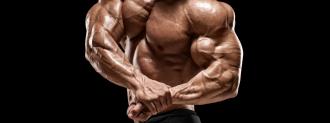There’s an old tale of ancient Greek wrestler Milo of Croton I first saw taped to the wall of the spartan fitness room of the old Myrtle Beach YMCA.
In one of his apocryphal feats of strength, it is said that Milo lofted a bull on his shoulders, butchered it, and devoured it in one day. It’s said he did so by first lifting the bull as a calf while he was a boy, then repeating the feat daily; as the bull and Milo grew, so too did his strength, building muscle along with the bovine.
And modern weight lifting isn’t as far off from that myth as you may think.
“Surprisingly, not very much is known about why or how exercise builds muscles: there’s a lot of anecdotal knowledge and acquired wisdom, but very little in the way of hard or proven data,” said University of Cambridge physicist Eugene Terentjev.
“Surprisingly, not very much is known about why or how exercise builds muscles: there’s a lot of anecdotal knowledge and acquired wisdom, but very little in the way of hard or proven data.”
Eugene Terentjev
Terentjev and his Cambridge colleagues have been trying to fill in that knowledge, and their latest work may one day make you a Milo: a mathematical model for building muscle.
The model calculates the best amount of exertion for increasing muscle mass, and could eventually be rolled out as a software tool.
Why it matters: Clearly, athletes could love this tool. It would save them time and energy in avoiding exercises that are less productive for their bodies.
What’s more, this tool may eventually benefit more people than athletes: it could also help people suffering from muscular atrophy and skeletomuscular disorders gain muscle more efficiently.
Build knowledge, building muscle: We may not know all the underpinnings of how exercise allows us to build muscle, and how inactivity causes it to wither away, but the sports and rehabilitation medicine community has done a lot of research on the topic.
Basically, we know at this point that higher weights, more repetitions, and more frequency can all cause us to build muscle.
Still, even with centuries of experience and knowledge under our weightlifting belts, there’s two big questions we’ve yet to answer, Terentjev and co-author Neil Ibata wrote: How do the muscles know they’re being exercised? And what signals do they give off to cause their physiological change?
You just can’t design a good, controlled study of building muscle in people.
If you’ve ever heard someone describe an athlete — or you, you fit devil — as “rope-like,” the compliment is fitting right down to the molecular level. Your muscles are made up of very small filaments, smaller than the cells themselves.
“Because of this, part of the explanation for muscle growth must be at the molecular scale,” Ibata said. We figured out how the bigger muscle pieces work roughly 50 years ago, Ibata said; how those smaller proteins and pieces fit in isn’t clear yet.
Because everyone is different and exercising is such a complicated activity featuring a lot of changing variables, it’s extremely difficult to study; you just can’t design a good, controlled study of building muscle in people.
Spot me, bro: In 2018, the Cambridge researchers spotted something that helped to fill in part of the picture. Muscles are made of three main components, but two of them had no place for signaling molecules that say ‘hey, time to get swole’ to bind.
The third one, called titin, was found to be responsible for ordering those changes to the muscle when the swole molecules bound to it
Their model predicted that the best amount of force for building muscle is around 70% of your maximum load.
When titin is being worked over by forces — like lifting weights — it can change shape, revealing new places for the muscle growth molecules titin is looking to stick to. When put under a lot of force, or worked for a prolonged amount of time, the growth signals have more time to bind, so titin can tell your cells to get to work building muscle.
This new mathematical model is designed to optimize this signal molecule window.
Muscle maths: Their model predicted that the best amount of force for building muscle is around 70% of your maximum load — the amount you could lift once. (Fwiw, this sounds about right, based on anecdotal experience.)
Lift below 70%, and you may not keep that titin window open long enough for optimal muscle building; go higher, and “rapid exhaustion prevents a good outcome, which our model has quantitatively predicted,” Terentjev said.
The model can predict how long a muscle can sit around before it begins to atrophy, and then help to create the best plan for building it back.
Eventually, the researchers hope to roll out easy-to-use software based on their model, although more research needs to be done first, especially with female athletes, since sports studies tend to be biased towards males.
We’d love to hear from you! If you have a comment about this article or if you have a tip for a future Freethink story, please email us at tips@freethink.com.

